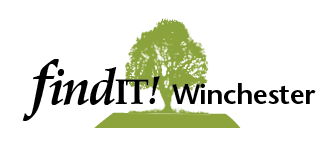Are you ready to fit the whole world into a single photo?
Spherical Panoramas (a.k.a tiny planets or photospheres) are part of our everyday life, including street view in Google Maps, online realty listings and most recently the advent of Apple's Vision Pro virtual reality computer headset. Yet one application of this practice has proven to be especially attractive to artistic photographers around the world, the 2D stereographic projection commonly known as Tiny Planets.
When applied as an art form the 360º x 180º view of a location becomes a 2D square, circular or rectangular frame. Depending on the artist, it can be full of whimsy, a serious or dramatic depiction of architecture or even an incredible opportunity for portraits, group or otherwise. What make Tiny Planets stand alone is certainly the alternative to our standard photographic reality- a sphere with landforms and objects thrusting into the air (or night sky) or the opposite inverted as a tunnel with the perspective in the extreme pointing into a single center point.
In this ONLINE course, Matt Hill will share his entire process from choosing gear, to planning, capture and post-processing inventive and thoughtful tiny planet panoramas. Through his own examples and group image reviews, this workshop will help attendees gain insight into their work on tiny planet photographs and come away with insights on how to expand and develop their own creative practice in the future.
Outcome:
Each student has greater knowledge of how to achieve the projects and how to best use the gear they have, or have purchased for this course, plus a starting body of work and creative guidance on developing it further.
Requirements and Tools:
You can use simple photographic tools, perhaps the photographic tools you have, or advanced gear such as a panorama rig to capture a tiny planet. Matt prepared this gear primer for potential students to self-evaluate if they have the correct equipment. Please read before registering.
A desktop computer or laptop (not touch devices, as PTGUI will not run on those).
Software: Access to, or your own license all of the following software: Adobe Lightroom Classic, Adobe Photoshop, and PTGUI Pro. Arriving at the first lesson with basic working knowledge of Lightroom Classic and Photoshop is strongly suggested.
Class Price: Member Price, $895.00 / Non-Member Price, $950.00 (Non-member price includes a one year membership to the Griffin Museum, a $75 value).
Dates and Times: Four sessions ONLINE, with ample time in between classes for assignments
Session 1: July 31, 7:00pm-9:30pm, ET
Session 2: August 19, 7:00pm-9:30pm, ET
Session 3: August 26, 7:00pm-9:30pm, ET
Session 4: September 18, 7:00pm-9:30pm, ET
Sessions include: lectures, technique demonstrations, Q&A, group image review (2nd-4th sessions) and software demonstrations. All sessions will be recorded and available to attendees to watch on demand afterwards.
About the Instructor:
Matt Hill has been teaching technical and creative photography for 20+ years to a wide variety of students and attendees. He's been a night photographer since adolescence, a marketing director in the photo industry, a cut paper artist and most recently, co-founder, partner and educator at National Parks at Night-now in its ninth season of on-location workshops, skills-based experiences and photo tours.
Throughout his life, photography has been a constant companion, providing a guiding light and a way to push his own creative boundaries. Never truly satisfied, Matt has been working on expanding his knowledge and application of long-exposure night photography via light painting, camera techniques, processing, color management and all aspects of panoramic photography.
He excels at helping students achieve their goals, both creative and technical. His patient, clear teaching style unravels complex topics and will break them down into easy steps that build to the greatest understanding.
Matt is an ambassador for Calibrite and Novoflex.
